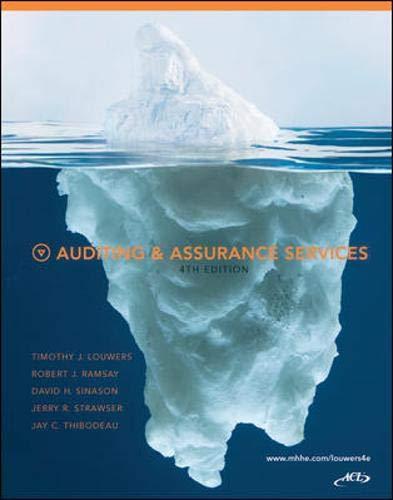Exercise 7-4A (Algo) Effect of recognizing uncollectible accounts expense on financial statements: Percent of revenue allowance method LO 7.1 Rosie Diy Cleaning was started on January 1, Year L it experienced the following events during its fist two years of operation: Events Affecting Year 1 1. Provided $34,130 of cleaning services on account. 2. Collocted $27,304 cash from accounts recelvable. 3. Adjusted the accounting records to reflect the estimate that uncollectible accounts expense would be 1 percent of the cleaning revenve on account. Events Affecting Year 2 1. Wrote off a $256 account receivable that was determined to be uncollectible. 2. Provided $39,830 of cleaning services an account 3. Collected $35,250 cash from accounts recelvable: 4. Adjusted the accounting records to reflect the estimate that uncollectole accounts expense would be t percent of the cleaning revente on account. Required: a. Organize the transaction data in accounts under an accourting equation for each yeat, b. Determine the following amounts: (1) Net income for Year 1 (2) Net cash flow from operating activities for Year 1 . (3) Balance of accounts recekable at the end of Year 1. (4) Net reolizable value of accounts receivable at the end of Year 1 . c. Determine the following amounts: (1) Net income for Vear 2 . (2) Net cash flow from operating activities for Yoar 2 . (3) Balance of accounts receivable at the end of Year 2 (4) Net realizable volue of accounts recelvable at the end of Year 2 , Complete this question by entering your answers in the tabs below. Organize the transaction data in accoums under an accounting equation for rear 1. Notel Enter any decreases to account balances with a minus stgn. Not all cells require inpot. Complete this question by entering your answers in the tabs below. Organize the transaction data in accounts under an accounting equation for Year 1. Note: Enter any decreases to account baiances with a minus sign. Not all cells require input. ROSIE DRY CLEANING Accounting Equation for Year 2 Determine the following amounts for the Year 1 accounting period. Note: Round your answers to nearest whole dollar amount. Determine the following amounts for the Year 2 accounting period. Note: Round your answers to nearest whole dollar amount











